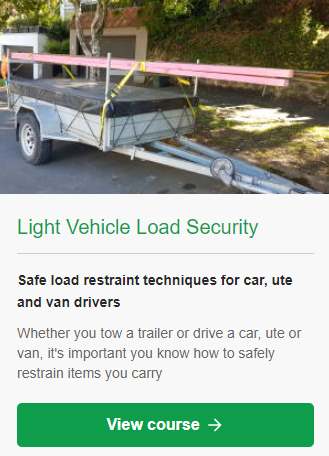The loading area of a ute can either be:
- Wellside (with or without flat cover)
- Wellside with canopy
- Flat deck (with or without tailgate and side gates)
- Custom (e.g. toolboxes, kennels, racks, cages, etc)
Each type of ute is loaded differently and it’s a legal requirement that the driver understands how to make the load safe and secure when driving on a public road. The load must be secure enough to not break through into the cab, fall off, or hit other road users, and it must be secured in a way that it doesn’t get damaged.
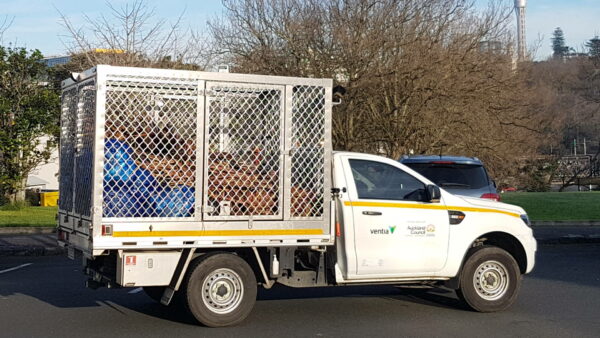
You can learn in detail about how to load light vehicles like utes in this course.
We covered types of ute here.
The main things to be concerned about when loading a ute are:
- Weight
- Dimensions
- Load security
Weight
Your ute has two axles and it’s easy to overload them if you position a heavy load in the wrong place. Your ute’s manual should have maximum axle loading. If you position that load directly over the rear wheels, the rear axle will take the majority of the load. If you move the load forwards toward the headboard, then more of the load is taken by the front axle. The front already has to deal with the engine and some of the weight of the passengers, so more weight should be loaded over the rear to keep it balanced.
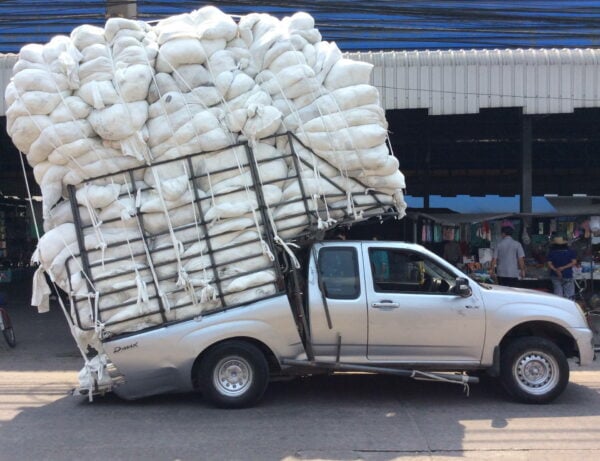
Remember that the towball load adds to the rear axle. If you have 10% of the trailer weight on your ute, that will add 200kg to the rear axle load if your trailer is 2000kg.
Dimensions
The maximum width of the ute, including any load overhanging the side, is 1.275m either side of the longitudinal centre line of the vehicle. If it’s wider than 200mm from the edge of the vehicle, oversize flags need to be used.
If your load overhangs by more than 1m in front of or behind the vehicle, you must tie a white, red, yellow or orange fluorescent flag to it that’s more than 40x30cm.
The maximum overall length must be less than 12.6m. The load can extend up to 4m behind the rear axle and 3m in front of the front edge of the driver’s seat.
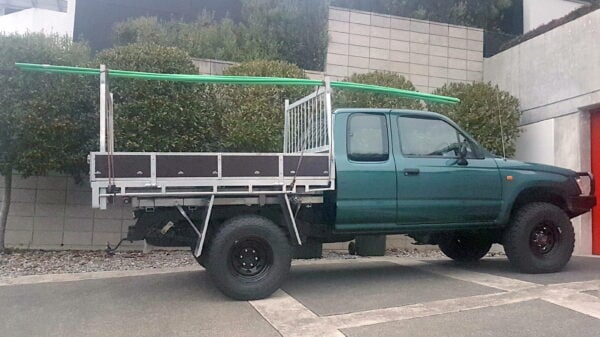
Load security
Any load in the ute must be restrained so that it doesn’t move under braking, acceleration and cornering.
Flat deck utes
Flat deck utes have a headboard behind the cab which you can position loads against, but wellside utes often don’t have this. If a load is placed against the headboard, it is ‘blocked’ by the headboard. Because the load can’t build up any kinetic energy by sliding forwards under braking, the headboard provides good protection for the driver. In a sudden stop due to an impact, though, the headboard might not be enough to stop the load. Also, the load needs to be restrained from moving sideways and rearwards, therefore load restraints are needed.
The best method of load restraint on a flat deck ute are gates plus ratchet straps attached to the rope rails.
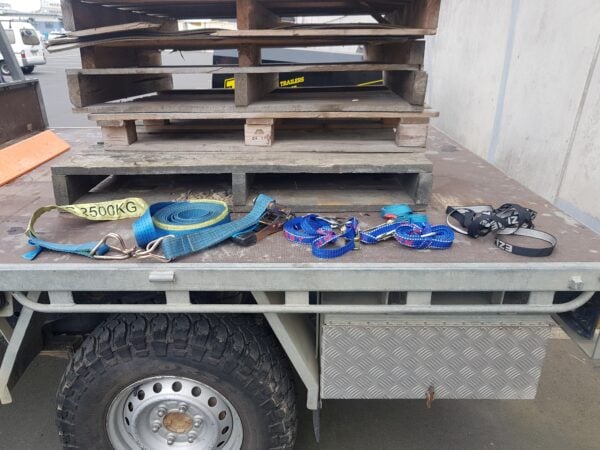
The side gates and tailgate provide a rigid barrier to contain or block the load, while the straps pull down on the load to increase friction against the deck. If the deck is metal, it will have much less friction when it’s wet vs dry; wooden decks are better for friction.
The rope rails probably won’t have a rating plate (only heavy vehicles require them), so you’ll need to check with the manufacturer. You can probably assume that any rope rail is good for 200kg, assuming it’s fairly recent and in good condition.
Connect the ratchet strap hooks next to the dropper, not mid-way between the droppers. The rope rail is most rigid where it meets the dropper, and you can easily bend the rope rail if doing it mid-span.
Ropes are not an ideal load security method because they are difficult to tie correctly, they stretch too easily and they cut into the load. The broader, flat ratchet strap creates less damage on loads, especially when used with edge protectors.
Don’t load over the top of the tailgate. Block any long loads such as timber in the rear gate and rest them on the headrest so they extend above the cab.
Wellside utes
Most wellside utes don’t have a headboard, which means the rear window is the area of risk when loads shift. Take care positioning your load so it doesn’t move and break the window.
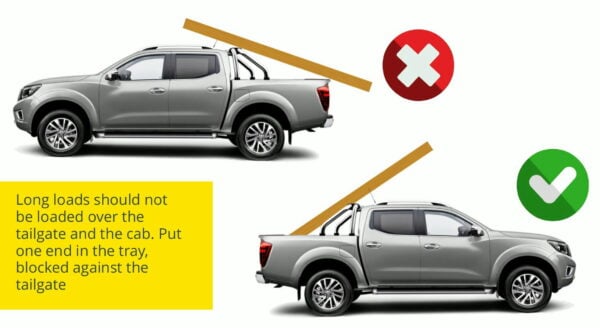
The tie down points are less flexible in their locations than a rope rail – usually just one in each corner of the tray. Your ute’s manual will give their rating.
If you have a sports bar, this is not a rated tie down – don’t expect it to provide any load security.
Rope hooks along the side of the vehicle are only rated for a tonneau canopy, not for load restraint (you’ll end up bending them or the sides of your ute.
Lockable toolboxes
These are good for storing small, heavy items. As they are contained, no additional load restraint is required, as long as the toolbox itself is restrained.
Light vehicle load security training
Anyone driving a ute for work must be trained in safe load security if they are carrying goods or tools whether inside the cab or on the tray. The course is linked above and also covers trailers and goods carried in the vehicle. Items that fall off the ute cause a danger to other road users, while items that are unrestrained can injure the driver and others if the driver has to brake heavily or is in a crash.

